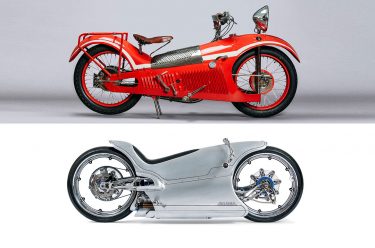In this glimpse behind the scenes, we explain the inspirations that underpin the creative realisation for the exhibition ‘Future Beauty: 30 Years of Japanese Fashion’, from the collection of the Kyoto Costume Institute.
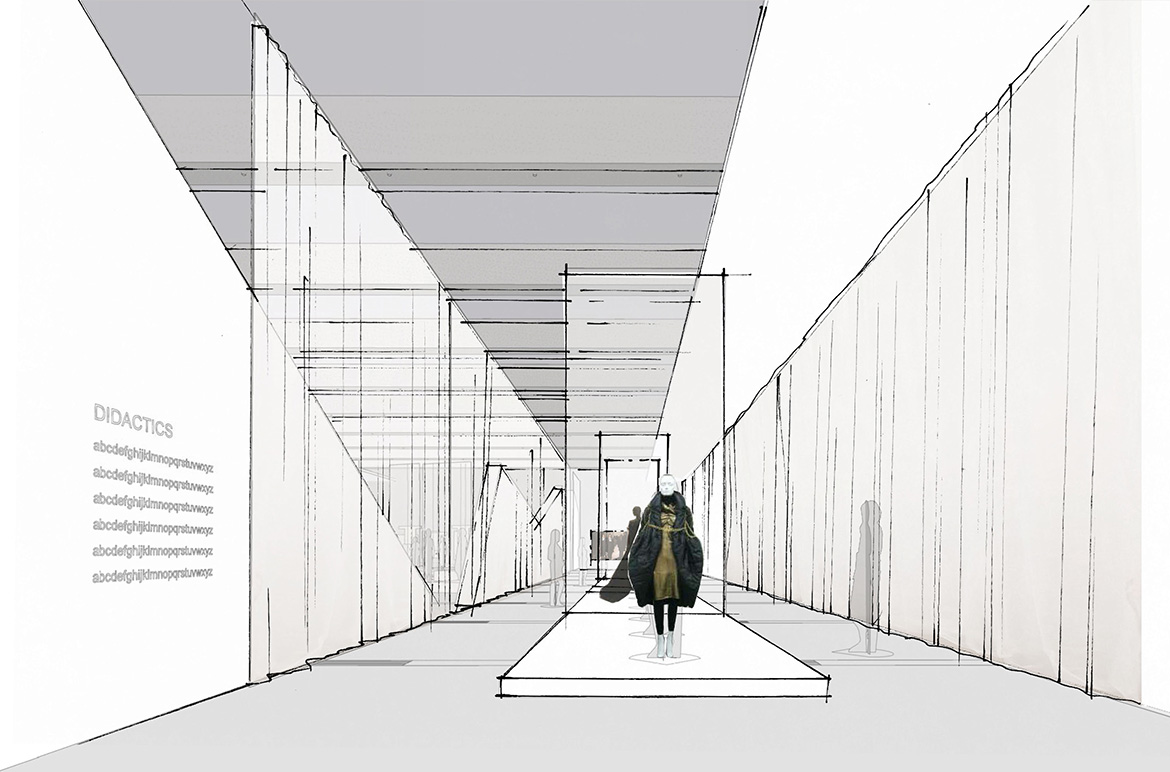
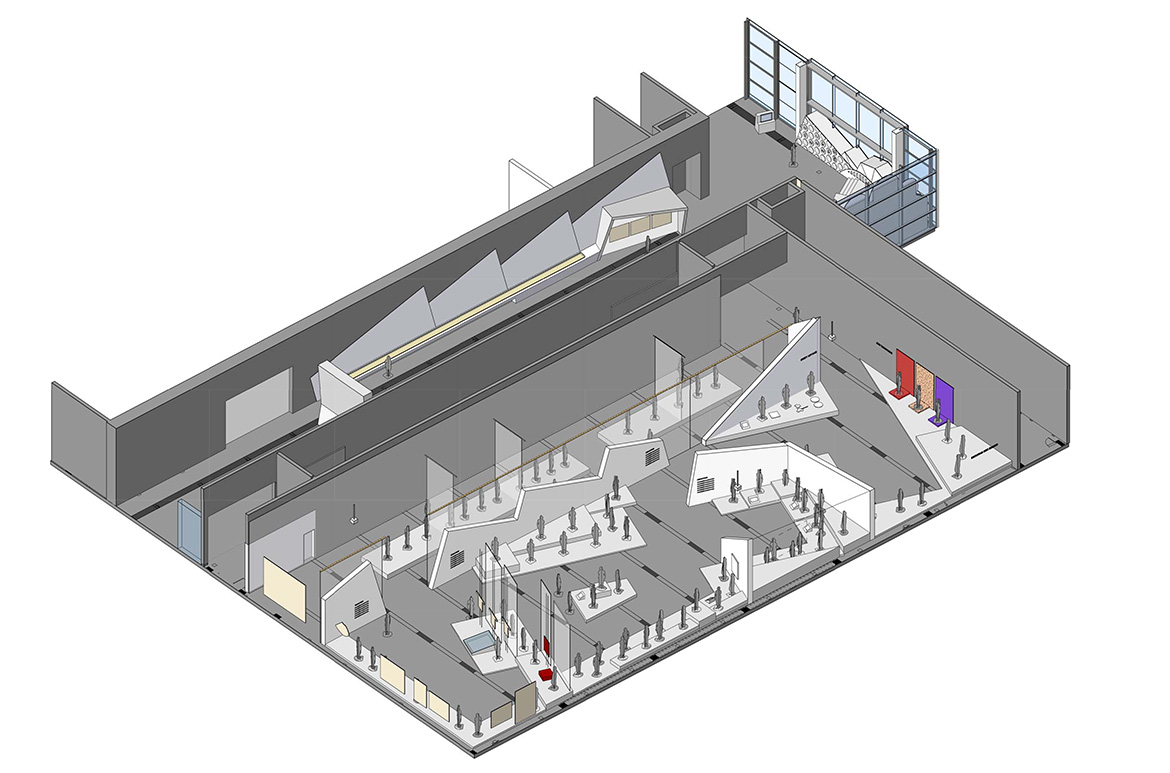
The ‘Future Beauty’ exhibition is a celebration of simplicity, designed to showcase the garments on display. The result is a landscape of forms and shadows that are poetic, and embrace the Japanese forms of origami. ‘Future Beauty’ is characterised overall by a minimalist white interior. In The Fairfax Gallery 1.1, the exhibition’s five themes — In Praise of Shadows; Flatness; Tradition and Innovation; Cool Japan; and Designer Focus — take on the elements of the featured garment designs. The Long Gallery is defined by the use of black and shadow play. Incorporated across both galleries are the abstracted origami-inspired patterns, present in partitions and wall elements. The division of these spaces and the layout of the garments create a meandering path of travel that conceals the next grouping. The shift and angling of the partitions within these spaces are arranged to enable them to unfold as one moves through the spaces, with contrasting palettes and spatial associations enhancing the individual themes.
The overall design of ‘Future Beauty’ draws parallels with architect Tadao Ando’s purist aesthetic and simple construction techniques. This aesthetic, combined in the Long Gallery with a monochromatic palette, mirrors established aesthetics within the contemporary Japanese fashion scene. The Gallery’s exhibition design team also found inspiration in the Japanese art of origami, seen through the fold and play of angular wall panels, which turn down into key sculptural elements within the space. The principles of origami, also prevalent in Japanese modern art, are expressed in the ‘Tradition and Innovation’ section through Junya Watanabe and Issey Miyake garments. Captured below these folds is one rectilinear plywood box that holds a wealth of rare books, catalogues and magazines highlighting Yamamoto, Miyake and Kawakubo’s collaborations with artists, photographers and designers. Black is used within the Long Gallery, drawing on a cultural sensibility attuned to light and shade and the power of black, prevalent in contemporary Japanese fashion.
RELATED: Japanese Fashion
RELATED: Behind the costume: Lady Gaga
SIGN UP NOW: Subscribe to QAGOMA Blog for the latest announcements, recent acquisitions, behind-the-scenes features, and artist stories.


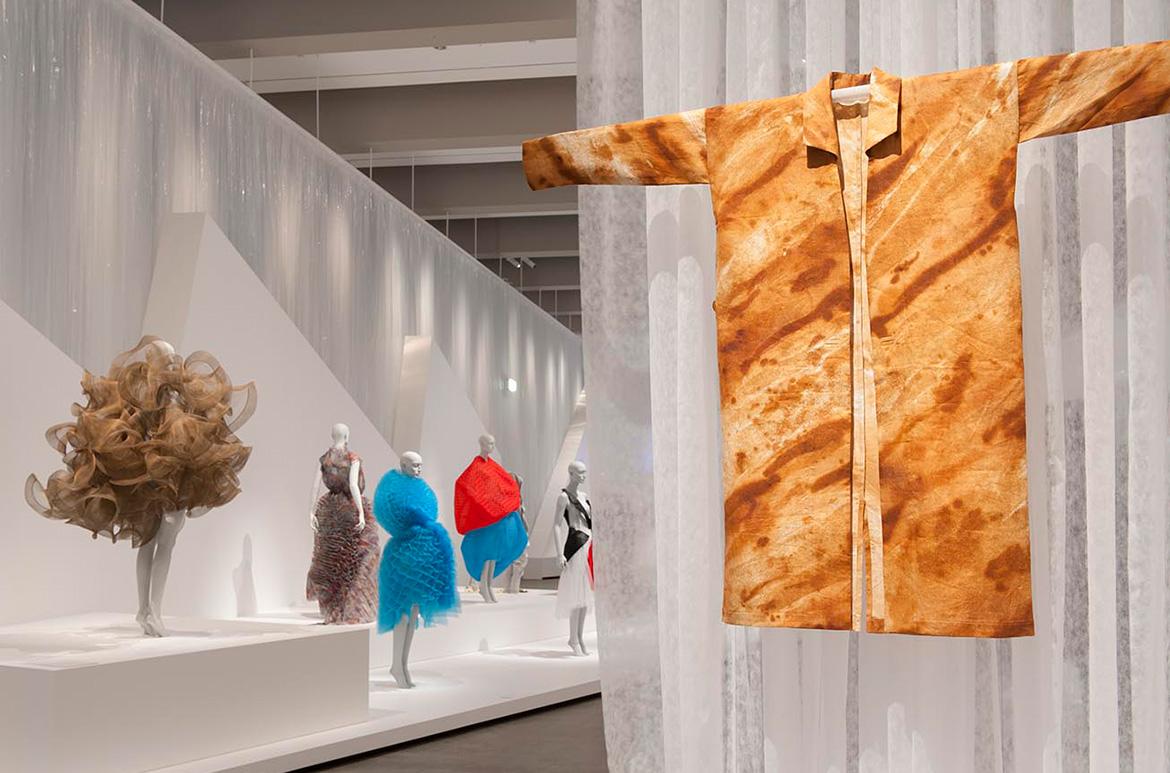
The softness of the shadow is critical to the design experience within ‘In Praise of Shadows’, the first section in the exhibition. The tactile nature of the fibre curtains subtly reveals the space through a six-metre-high fabric drop, which evokes a cathedral-like experience. Mannequins are silhouetted in groups between tensioned fabric panels, adding to the layered tones of shadows. The rectilinear plinth design will resonate with the patrons’ sense of drama and the theatre of a catwalk parade. At the end of this section, plays a large-screen projection of a runway show where Rei Kawakubo and Yohji Yamamoto first introduced some of these concepts to the fashion world.
Flatness’ explores the simple geometries and interplay of flat planes and volume, particularly in the work of Issey Miyake and Comme des Garçons (Rei Kawakubo). Here, designers reference the Kimono as carrying a defined sense of space. The use of the suspended tactile fibre curtain has been gathered to provide more visual separation between ‘Flatness’ and ‘Tradition and Innovation’.


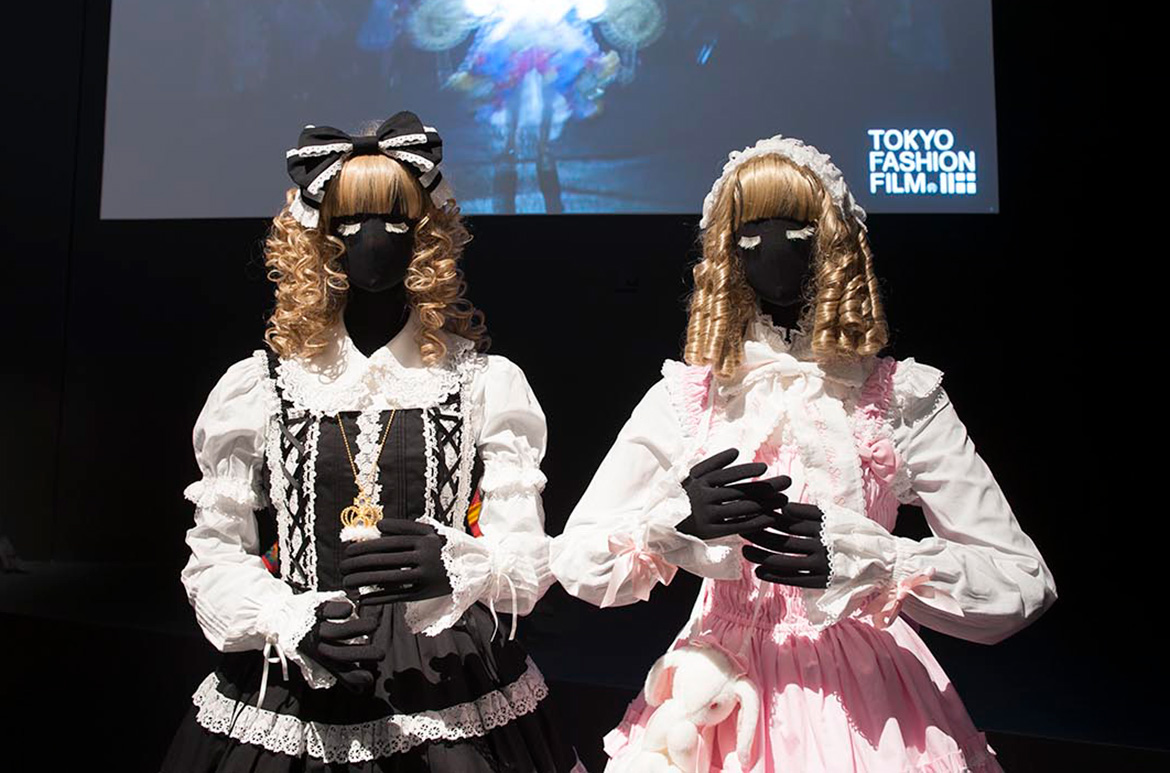
The next section in the lower galleries focuses on the spectacle that is ‘Cool Japan’, allowing a design approach that tends to the outrageous rather than the discreet. The layout of the partitions assists to define this unique and playful collection of garments, accompanied by a selection of films set within this zone. The black wall and plinth provide a strong contrast as a backdrop for the colourful garments.
The final section focuses on each of the exhibition’s principle designers. A key feature within this space is the reproduction of three fabric patterns used as a wallpaper blanket on each display plinth and adjacent wall, emphasising each of the show’s key fashion collections.
Situated within the River Room, adjacent to the exhibition, is a custom-designed seating platform for Up Late, accompanied by a kaleidoscopic backdrop closely connected to the ‘Cool Japan’ theming. The overall graphic style of the surrounding stage has been influenced by J-pop star and model Kyary Pamyu Pamyu’s videos, an all-out assault on the senses. The overall effect, we hope, is one of overwhelming cuteness and colour, albeit tinged with a dark twist. Patrons are encouraged to have their photo taken in front of the stage and upload their image to a live feed to be seen on one of the ten screens embedded in the stage backdrop. A cloud of soft toys, inspired by Harajuku fashion styles and the ‘Kawaii’ design leader Sebastian Masuda.
The ‘Future Beauty’ design is a result of both the Project Exhibition Designer Grace Liu and Assistant Exhibition Designer Rebecca Shaw’s collective efforts to nurture the design with a sense of the authenticity it deserved.
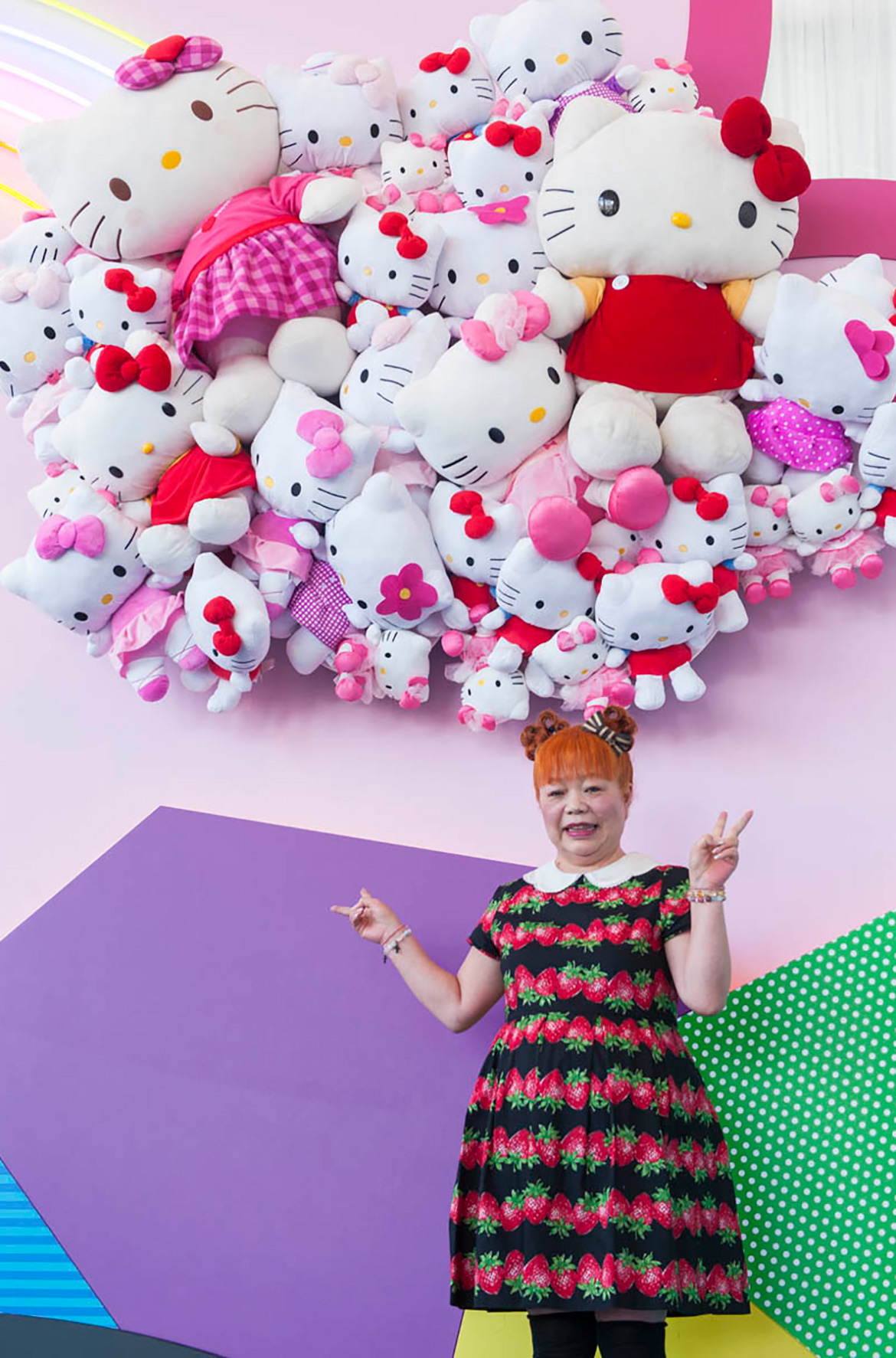

Subscribe to YouTube to go behind-the-scenes / Watch our fashion in-conversations / Read more about your Australian Collection
#QAGOMA

